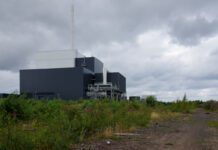
The nations that have signed agreements to stabilize the global mean temperature by 2050 will be unable to meet their goals unless existing fossil fuel-burning infrastructure around the world is retired early, according to a study – published on 1 July in Nature – led by the University of California.
“We need to reach net-zero carbon dioxide emissions by midcentury to achieve stabilization of global temperatures as called for in international agreements such as the Paris accords,” said lead author Dan Tong, a UCI postdoctoral scholar in Earth system science. “But that won’t happen unless we get rid of the long-lasting power plants, boilers, furnaces and vehicles before the end of their useful life and replace them with non-emitting energy technologies.”
The number of fossil fuel-burning power plants and vehicles in the world has increased dramatically in the past decade, spurred by rapid industrial development in places such as China and India. Meanwhile, the average age of infrastructure in developed countries has decreased. For example, old coal power plants in the U.S. have been supplanted by new natural gas ones.
According to the study, emissions from existing energy infrastructure take up the entire carbon budget to limit mean warming to 1.5ºC and close to two-thirds of the budget to keep warming to under 2ºC over the next three decades.
Although the pace of growth has slowed in recent years, a significant amount of new electricity-generating capacity has been proposed globally; some of it is already under construction. If this prospective infrastructure is built, total future emissions take up three-quarters of the budget to constrain warming to below 2ºC.
The study used data sets of existing fossil fuel-burning infrastructure in 2018 to estimate “committed” carbon dioxide emissions. They assumed that power plants and industrial boilers will operate for about 40 years and that light-duty vehicles will be on the road for 15 years, with some regional variation in fuel economy and annual miles traveled.
The researchers also tested lifetime assumptions in order to see how early CO2-emitting infrastructure might need to be retired in order to meet international climate goals. For example, a 1.5ºC rise might still be avoided if current power plants were shuttered after 25, rather than 40 years.
If existing infrastructure operates as usual, though, it will emit about 658 gigatons of CO2 during its operational lifetime, the scientists found. More than half of these emissions are projected to come from the electricity sector, with China producing the largest share, 41 percent, the U.S. producing 9 percent and the European Union 7 percent. If built, power plants being planned, permitted or under construction would emit an additional 188 gigatons of CO2, approximately, says the study.






